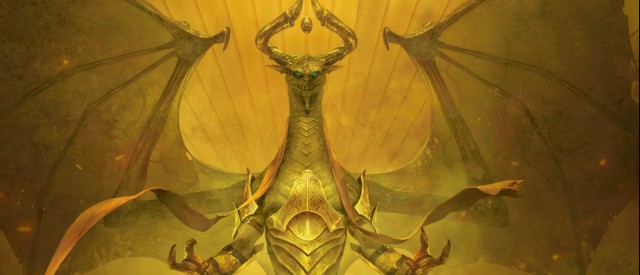For those not in the know, the Duels of the Planeswalkers series exists almost entirely as a sort of gateway drug to either the physical version of Magic: The Gathering or Magic Online. Starting with the 2012 edition, the cards represented and available gametypes serve two purposes - to give new players familiarity with the “state of the game”, and give veterans a chance to test drive unreleased cards a few weeks before the new Core Set releases.
It’s quite a brilliant little piece of marketing - players are given plenty to do, but there are small restrictions in place to attempt to drive you to playing the actual CCG, which generates plenty of cash from booster packs, premade decks and the casual variants, such as Commander (EDH!), Archenemy or Planechase.
So how’s this year’s model? Very similar to Duels 2012 - so much so, that I’m really only going to focus on what’s new or different. First up, the most obvious change is the culling of last year’s Archenemy campaign in favor of Planechase, whose physical counterpart recently got an update.

Planechasin'
Planechase is a standard free-for-all variant that brings two twists to the table: the Planar Deck and the Planar Die. The Planar Deck represents the various planes of the Multiverse you travel to and contains two types of special cards: Planes and Phenomenons. The Planar die can be rolled on your turn to attempt to planeswalk to (reveal) a new Plane card, or trigger the Chaos ability of the current plane. It can also do nothing, which seems to be the story of my life.
Planes have both passive abilities and a Chaos ability (more on that in a second). The passive effects vary wildly - such as restricting the number of creatures who can attack and block in a turn, or allowing players to cast enchantments as though they had the keyword ability of Flash.
Each Plane’s Chaos abilities are a little more drastic, and are tied into rolling the Planar die. If a player rolls the Chaos symbol, then crazy things can happen. My personal favorite plane gave all creatures entering the battlefield Haste and Double Strike, and its Chaos ability allows players to exile a creature they control from the board, then put it back into play instantly. I abused this one to drop a 43-point damage swing on my final opponent, which was especially satisfying since he was pestering me with fliers almost the whole match.
Phenomenons have instantaneous effect on the battlefield and usually exist to make everyone scramble to react. They can do things like reverse the turn order, which can really screw people over.
The campaign is fairly straightforward - you proceed through a series of matches against enemy Planeswalkers, unlock their decks for play, and keep going until you’ve taken down Nicol Bolas, the final Planeswalker and all-around bad dude in the Magic Multiverse. Once you’ve cleared it, you can take on the Revenge campaign for a greater challenge.
Rather than straight-up duels, there are new campaign matches called Encounters that challenge you to take on special scenarios. For instance, an early Encounter pits you against a player whose deck only contains one type of spell (a 1/1 flying creature), but he can cast one every turn (and he’s totally not building a tournament-legal deck). They ramp up significantly, but always offer similar situations - the enemy has a single strategy and their deck will be rather annoying.
Challenge mode returns, and unlike previous years, doesn’t pitch you a couple softballs to get things going. This was always my favorite game mode, and it’s disappointing that there are only 10 scenarios to take on.
